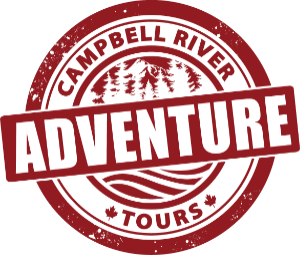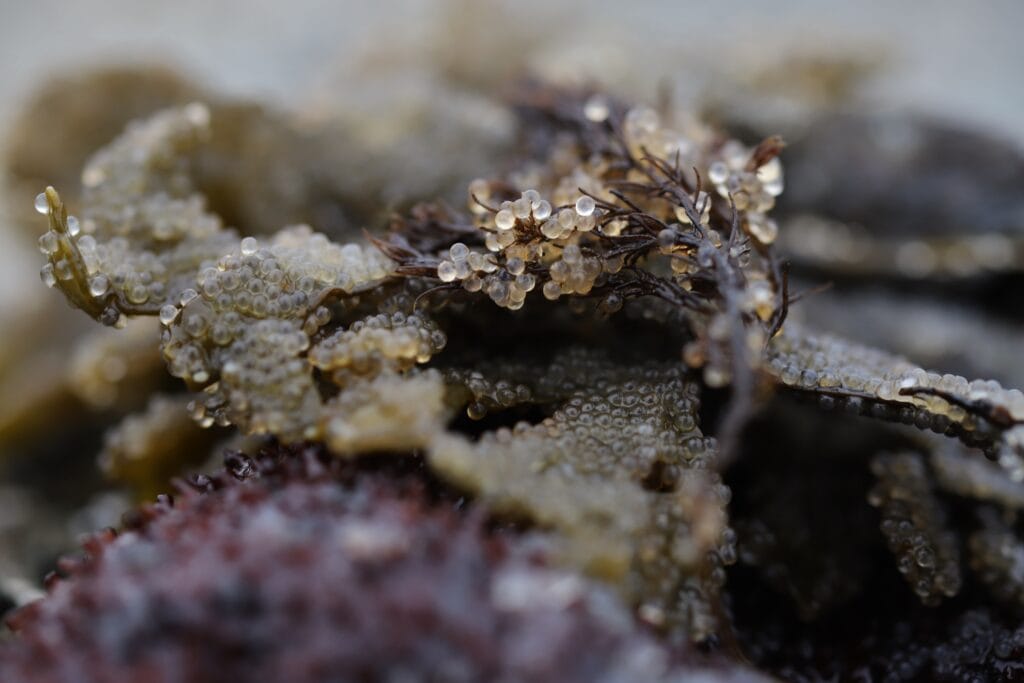Written by Zoe Hasenfratz
A tiny silver streak in the water. It catches your eye, and you turn your head to investigate. As you look down into the depth of a jade sea, you notice that it isn’t just one streak but thousands of silver fish darting through the water forming a formidable bait ball. Herring. The tiny link in a very large food web.
Herring are a small forage fish found in large schools along the British Columbian coastline. They feed mainly on zooplankton (tiny animals found at the ocean’s surface), krill, and some small fish species (Funk, 2007). These small giants are a crucial link between plankton and marine and terrestrial animals in the Pacific Northwest. They directly (and indirectly) supply food to whales, fish, birds, wolves, and humans alike.

Every spring herring cluster along the coast for a yearly natural phenomenon: the herring spawn. Gathering in large quantities, females can deposit an average of 20,000 eggs each, sending the entire coastline into a frenzy over these nutrient-rich gems (Funk, 2007). The males come through, painting the coastal waters a turquoise blue that nearly resembles tropical waters. Thousands of birds hang in the air, diving into the sea and adding to the chaos unfolding below. Among them are several species of gulls, surf scoters, and cormorants. The spawn draws many other species, Orca, Sea Lions, Humpback Whales, Gray Whales, and numerous larger fish species. As the egg-covered kelp floats ashore, bears, newly out of hibernation and starving, venture into the intertidal and feast on the nutrient-rich roe. Coastal wolves slink along the rocky coastline in search of discarded herring and their eggs.
Later in the summer, when the spawn is all but a memory, herring continue to supply wildlife with a steady food source. Among them are Humpback Whales, Sea Lions, Dolphins, and Salmon. You see, our temperate waters are the perfect habitat for krill and herring, drawing the humpbacks from their breeding grounds for their annual migration north.
Salmon and Forests
The small silver fish fill the bellies of salmon as they get ready to conclude their life’s journey with a final spawn up their natal streams and rivers. As fall rolls around, several different species of salmon work their way up water systems in search of the perfect spot to lay their eggs. As they do so, they are often intercepted by black bears and grizzly bears hoping to fatten up on the fat-filled fish to achieve their optimal weight before commencing their winter hibernation. When the fishing is successful, the bears drag their catch into the thick underbrush of the dark forests where they eat their fill, discard the salmon carcasses, and then nap in their day beds to properly digest their food.

Keen-eyed ravens, bald eagles, and gulls hop from tree to tree, waiting for the bears to discard any unwanted salmon along the riverbeds. Once dropped, they swoop down and feast. Ravens and eagles often snatch the carcasses and fly them into the forest, away from competition.
As the salmon decompose in the surrounding forest, their bodies create nutrient-rich fertilizer thanks to the nutritious plankton consumed by the herring, which are in turn eaten by the salmon. Nitrogen and other nutrient cycling is an integral part of a healthy forest ecosystem, and thanks to the large mobile consumers, such as bears, forests can obtain these essential compounds needed in landscape heterogeneity (Holtgrieve et al., 2009). You see, this is one of the places where the ocean and forest collide. One cannot properly function without the other.
Without our small silver herring, the food that they eat and the food that they become, our entire marine and terrestrial ecosystems would look vastly different. Each species is a stepping stone to the next, and they each play a crucial role on the British Columbian coast. They rely so closely on each other that if the balance tips ever so slightly, the entire web will fall out of sync. Every living thing, regardless of how minuscule, participates in withholding the rugged mountains, temperate rainforests, and wild coastline of the West Coast.
Citations:
Funk, F. Pacific Herring: Wildlife Notebook Series – Alaska Department of Fish and Game.(2007). https://www.adfg.alaska.gov/static/education/wns/pacific_herring.pdf
Holtgrieve, G.W., Schindler, D.E. & Jewett, P.K. Large predators and biogeochemical hotspots: brown bear (Ursus arctos) predation on salmon alters nitrogen cycling in riparian soils. Ecol Res 24, 1125–1135 (2009). https://doi.org/10.1007/s11284-009-0591-8



